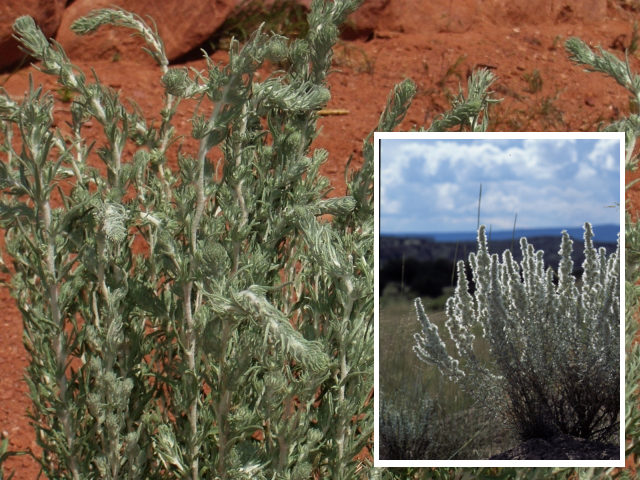|
Shrubbery
WINTERFAT
Krascheninnikovia lanata
 |
WINTERFAT
Krascheninnikovia lanata
The common name refers to this plant's usage as an important winter
forage plant for wildlife and livestock. This plant is also called white
sage or winter sage. It is a compact perennial shrub that grows to about
three feet.
The base of the shrub has yellowish, fibrous wood with flaky bark.
This base is about four inches tall. From this base long stems grow
each year.
The stems, branches and leaves are covered with dense long hairs that
give
the plant a silvery appearance. Small spikes of male and female flowers
are arranged separately but on the same plant.
Generally, there are two to four male flowers in small clusters, while
there are many female flowers along a short stem. Even the fruits have
long hairs.
It blooms from mid-spring to summer. Fruits may remain on the plant
all winter.
The protein content of Winterfat is close to alfalfa,
making this a valuable forage plant.
Navajos parboiled the leaves and ate them to relieve the
expectoration of blood. Winterfat and rabbitbrush were thrown onto
hot stones in sweat lodges for aroma.
Differences in the salt content of the soil show up in the leaves of
winterfat.
The more salty the soil, the shorter, thicker and hairier are the leaves.
|